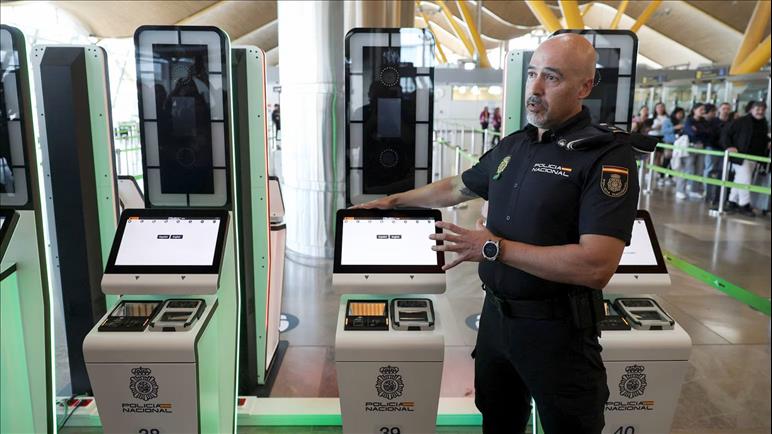
EU Begins Rollout Of Digital Border Control System To Replace Passport Stamps
The European Union began phasing in a new digital border control system on Sunday aimed at replacing passport stamps for non-EU travelers, officials said. The Entry/Exit System (EES) will electronically record entry and exit data, including fingerprints and facial images, across the bloc's external borders.
The scheme, which will be implemented over the next six months, is designed to detect people overstaying their visas, prevent identity fraud, and curb illegal migration. EU officials say the system is part of a broader effort to modernize border management and improve security across Europe.
Under the new process, non-EU travelers will scan their passports at checkpoints where their biometric data - fingerprints and facial recognition - will be registered. On future trips, automated facial verification will replace physical passport stamping, aiming to shorten queues and streamline travel.
Magnus Brunner, the EU Commissioner for Home Affairs and Migration, called the EES“the digital backbone of Europe's new migration and asylum system.” He said it represents“a major step toward smarter border management and enhanced security across the Union.”
The EU plans to make the system fully operational by April 10, 2026. Officials said the six-month transition period would allow member states, transport operators, and travelers to adjust gradually to the new procedures.
In Britain, where the system is being introduced at exit points such as Dover Port, the Eurotunnel terminal in Folkestone, and London's Eurostar station, testing began on Sunday. From November, the checks will extend to private vehicles, with full implementation expected by the end of the year.
UK Border Security Minister Alex Norris said the government is coordinating closely with EU partners to minimize disruption.“We know these changes are significant,” he said,“but digital reforms will strengthen border protection and help tackle illegal migration.”
Analysts say the introduction of the system reflects growing political pressure in parts of Europe to tighten migration control. EU officials hope it will make border checks faster, more accurate, and more transparent, while reducing congestion at key entry points across the continent.
ShareFacebook Twitter WhatsApp Email Print Telegram
Legal Disclaimer:
MENAFN provides the
information “as is” without warranty of any kind. We do not accept
any responsibility or liability for the accuracy, content, images,
videos, licenses, completeness, legality, or reliability of the information
contained in this article. If you have any complaints or copyright
issues related to this article, kindly contact the provider above.


















Comments
No comment